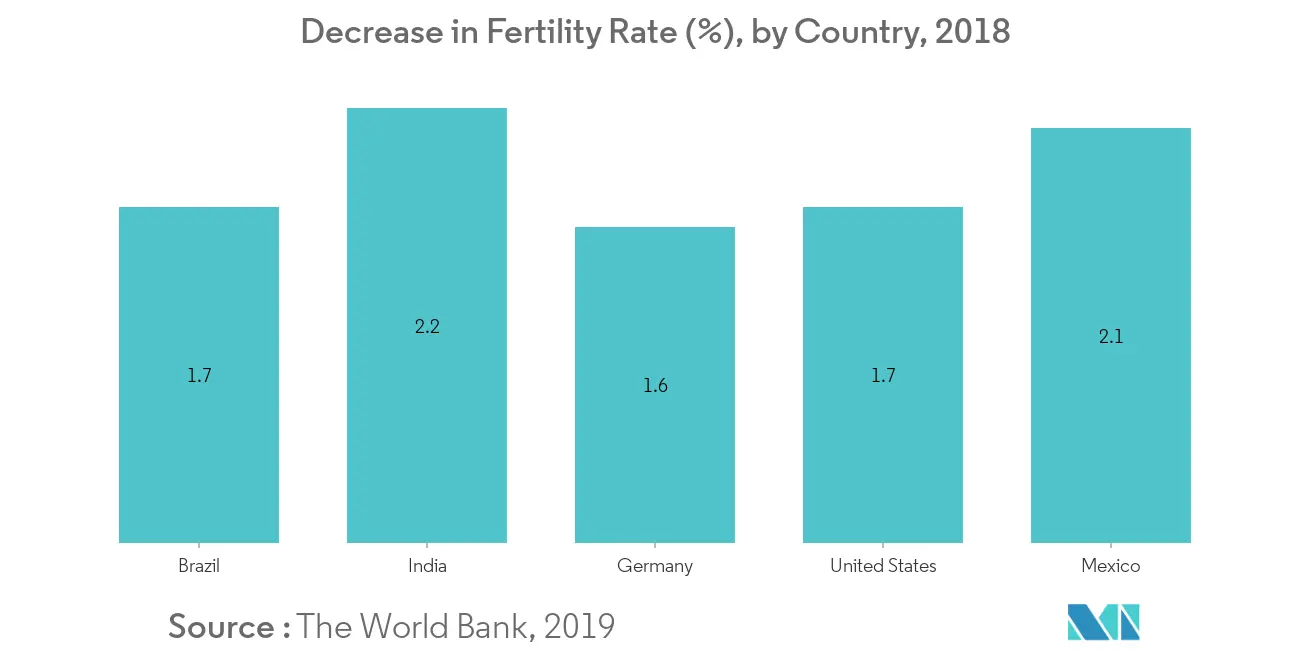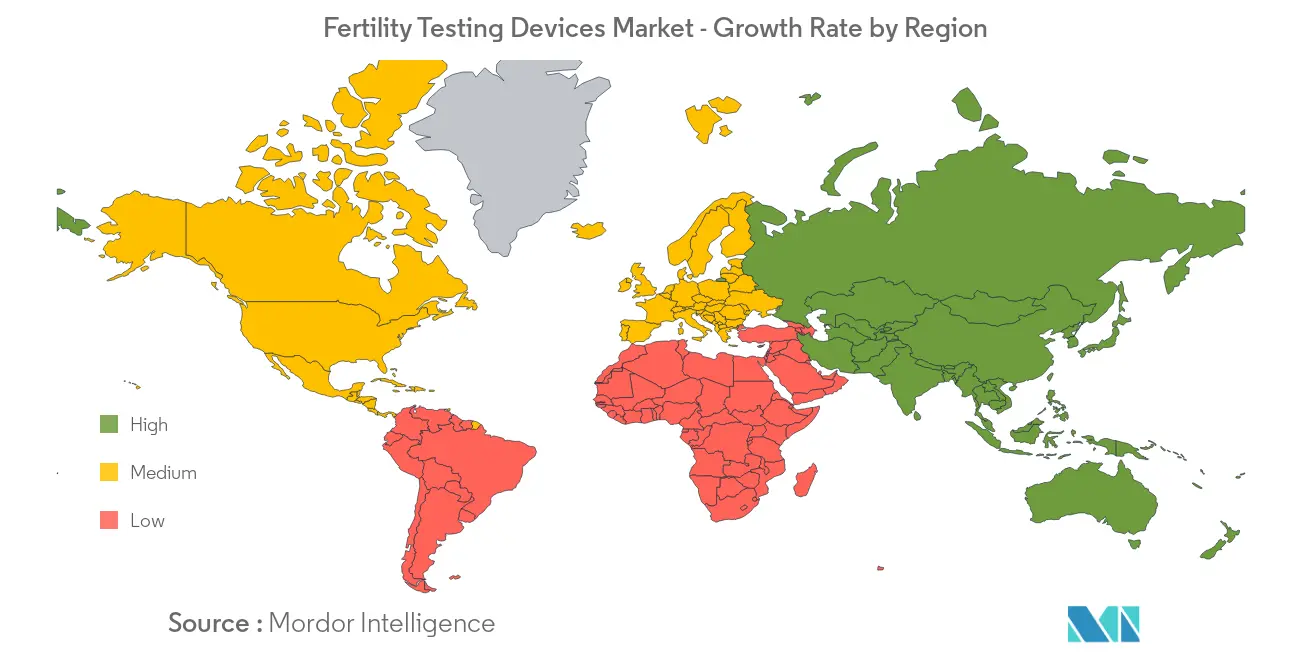Market Trends of Global Fertility Testing Devices Industry
This section covers the major market trends shaping the Fertility Testing Devices Market according to our research experts:
Ovulation Prediction Kits are expected to Witness Healthy Growth over the Forecast Period
The pandemic has had mixed effects on the ovulation kit segment. On one hand, due to the luxury of time offered by the lockdowns, many couples planned for a conception during the pandemic. On the other hand, many organizations estimate that the economic crisis during COVID-19, as well as the resulting unemployment, a surge in domestic violence, and restricted access to healthcare during the antenatal period will affect birth rates, resulting in fewer million babies.
Organizations that deal with reproductive health are recommending, out of caution and concern for the lack of data (regarding the relationship between pregnancy and COVID-19), that couples planning pregnancies should hold off for the time being. The European Society of Human Reproduction and Embryology states that all fertility patients considering or planning treatment, even if they do not meet the diagnostic criteria for COVID-19 infection, should avoid becoming pregnant at this time.
OPKs or ovulation prediction kits are used to detect the exact day of ovulation for a woman who is planning for a conception. There are many kinds of ovulation prediction kits in the market. Most of the kits work by measuring the luteinizing hormone (LH) in the urine. LH levels rise 24-36 hours before ovulation. The high level of LH indicates that the release of the egg (ovulation) usually occurs 12-24 hours after the test turns positive.
According to the Centers for Disease Control, one in eight couples has trouble conceiving or sustaining a pregnancy, due to age, health issues, or other factors. This indicates that there is a need in the market for cost-efficient and accurate ovulation monitors. As OPK provides cost-effective fertility testing, its demand is increasing.

United States holds the Significant Revenue Share in the North America Region
In June 2021, the Brookings Institution estimated that in the United States, public health crisis and associated recession will result in 300,000 to 500,000 fewer births in 2021. According to the Guttmacher Institute survey, 2020, 34% of American women have either delayed their plans to have a child or reduced the number of children they expect to have because of the pandemic.
In 2018, the United States experienced a record low fertility rate. The fertility rate in the United States in 2018 was 1.776 births per woman, a 1.11% decline from 2017 (1.796). The number of births in the country dropped by 2% between 2016 and 2017, to 60.2 births per 1,000 women aged 15-44 years, continuing a general downward trend that started with the Great Recession of 2008. This marks the lowest that the fertility rate of the country has been in 30 years. According to the National Center for Health Statistics (2017), birthrates declined to record lows among all groups under the age of 30. Among women aged 20-24 years, the decline was 4%, whereas for women aged 25-29 years, the rate fell to 2%.
According to CDC, in 2019, about 6% of married women aged 15-44 years in the United States were unable to conceive after one year of trying. Moreover, about 12% of women aged 15-44 years in the United States have difficulty conceiving or sustaining a pregnancy.
Hence, the decreasing fertility rates and rising awareness about fertility testing are driving the fertility testing device market in the country.


